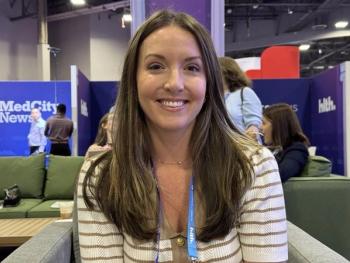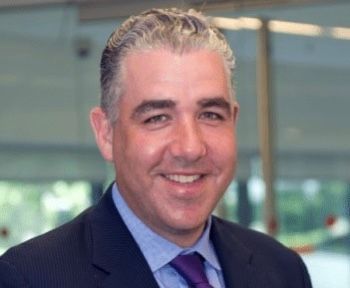
Celina Cunanan of University Hospitals is driven to improve health equity

The first person to oversee DEI efforts for the entire system, Cunanan talked with Chief Healthcare Executive about her role, engaging the community, and a mistake to avoid.
Celina Cunanan doesn’t have to look very far for motivation.
Cunanan is the inaugural chief diversity, equity and belonging officer at
She says she draws inspiration from her two sons, who are Black and Filipino.
“The work that I do is about them,” she says. “It’s about: How do I make the world a better place for them?”
“Everything that I've done has been focused on trying to make the world better for them,” she says.
A certified nurse midwife, Cunanan experienced severe complications with the birth of her second son. During a panel on health equity at the
After that experience, Cunanan found a new purpose.
“That really kind of drove me to say, What else can I do to help others?”
Cunanan spoke with Chief Healthcare Executive® at the AHA Conference about her work at University Hospitals, engaging the community, improving outcomes, and a mistake some systems make in their health equity efforts.
(Celina Cunanan talks about health equity in this video. The story continues below.)
Telling one story
University Hospitals has engaged in a host of efforts to improve health equity in and around Cleveland. Cunanan hopes to build on the work being done at the system’s 22 hospitals and expand on diversity, equity and inclusion efforts across the system.
“It’s really kind of building that structure that supports the strategy, and supports the work that's already ongoing,” Cunanan says. “It doesn't detract from any of the great work that individuals are doing in separate areas, but how does it pull together and make sense?”
Cunanan initially began leading DEI efforts at Cleveland Medical Center. She sought to expand those efforts system-wide and asked to have the post reportable to the CEO.
“There has to be centralized accountability for the work, but the work is really going to be locally and regionally within those hospitals and departments,” she explains.
By tying those diversity and equity efforts across the system, Cunanan says, “We can tell one story of commitment to the organization and to the communities.”
‘A labor of love’
Cunanan led the system’s nurse-midwifery division from 2007 through June 2022. In the course of that work, she gained a greater appreciation of the factors outside the hospital that can affect a patient’s health.
“When I was first a midwife, and I became a midwife for the organization, I thought I was going to birth babies, and everyone was going to have a great outcome because they had access to care,” Cunanan says.
She came to realize the impact of the social determinants of health, which plays an outsized role in the health of patients.
Cunanan played a key role in the development of the Rainbow Ahuja Center for Women & Children, which provides women’s and pediatric healthcare services. The center, located in Cleveland’s midtown neighborhood, also offers a host of other services, including vision, dental care, assistance with social needs, and legal aid.
“This was really a labor of love and years and years of feedback from our community, and our providers telling us about the struggles that our patients are experiencing,” Cunanan says.
University Hospitals established a community advisory board, which helped guide the development of the center and explained what people in the neighborhood truly needed. She said the advisory board stressed that neighbors needed assistance in a variety of ways, such as avoiding eviction and dealing with food insecurity.
“We really tried to focus our efforts, really utilizing some innovative programming, to build trust with our community, and also to improve outcomes for our patients to try and eliminate those barriers for social determinants of health,” Cunanan says.
“The Rainbow Center is like our crown jewel,” she adds. “It has been amazing to engage with the community advisory board to help them advise us of what needs to happen in that area.”
‘Community has all the answers’
For hospitals that are aiming to expand their health equity efforts, Cunanan stresses the importance of asking community groups what they need.
That’s a step some health systems overlook, she notes.
“I think it's really important to engage the community and engage the community and community stakeholders in the strategy,” Cunanan says. “I think it's the number one thing. And that's the number one mistake that organizations have made. They've gone in to say, ‘Here's what you need,’ instead of doing a really good job listening to the community about what they need.”
“The community has all the answers,” she explains. “We just need to pay attention and listen and bring them to the table.”
Health systems also need to bolster the diversity within their own ranks if they want to make progress in improving outcomes in underserved communities.
“We need to do more as healthcare organizations to ensure that our organizations, our leadership, our technicians, our nurses, our staff, reflects the diversity of the communities that we serve,” Cunanan says.
“That's a great way to build trust to say … we're not only asking you for advice, but we're actually asking you to be a part of the organization and help us co-create and design strategies and solutions for problems,” she adds.

















































